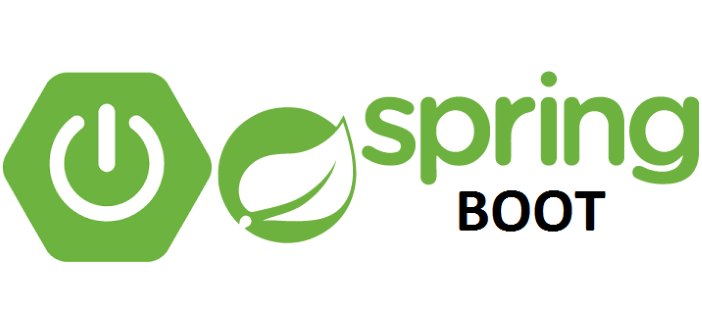
Spring Boot: Comprehensive Framework Analysis
Key Takeaway: Spring Boot transforms enterprise Java development by eliminating configuration overhead while maintaining Spring’s power and flexibility. Its auto-configuration, embedded servers, and production-ready features enable agencies to deliver scalable, maintainable backend services rapidly—from microservices to enterprise applications.
Introduction
Spring Boot is an open-source Java framework developed by Pivotal Software (now VMware) that extends the Spring Framework to simplify application development and deployment. Released in 2014, Spring Boot embraces a “convention-over-configuration” philosophy, providing opinionated defaults and auto-configuration capabilities that eliminate the extensive setup traditionally required for Spring applications. By embedding application servers like Tomcat, Jetty, or Undertow directly within JAR files, Spring Boot enables developers to create standalone, production-ready applications with minimal configuration effort.staticmania+1
Spring Boot applications can be launched with a simple java -jar command, making deployment straightforward across different environments. The framework includes built-in support for microservices architecture, health monitoring, metrics collection, and externalized configuration—features essential for modern cloud-native applications.wikipedia+1
History and Origins
The Spring Framework was originally created by Rod Johnson in 2003 to address the complexity of Java Enterprise Edition (Java EE) development. While Spring revolutionized Java development through dependency injection and aspect-oriented programming, it still required extensive XML configuration and manual setup processes that could be time-consuming and error-prone.scand
Spring Boot Timeline:
- 2013: Initial development begins at Pivotal Software to address Spring’s configuration complexity
- April 2014: Spring Boot 1.0.0 released, introducing auto-configuration and embedded servers
- 2016: Spring Boot 1.4 introduced testing improvements and Spring Boot DevTools for enhanced developer experience
- 2018: Spring Boot 2.0 delivered reactive programming support and improved metrics through Micrometer
- 2021: Spring Boot 2.5 introduced Gradle’s configuration cache and Docker image building support
- 2022: Spring Boot 2.7 marked the final 2.x release with enhanced observability features
- 2022: Spring Boot 3.0 launched with Java 17 baseline, native compilation support via GraalVM, and Jakarta EE migration
- 2024-2025: Spring Boot 3.2+ continues evolution with improved performance, security enhancements, and cloud-native capabilitiesendoflife
Spring Boot was specifically designed to maintain backward compatibility with existing Spring applications while dramatically reducing the barrier to entry for new projects.staticmania
Architecture and Core Features
Auto-Configuration
Spring Boot’s @SpringBootApplication annotation combines three essential Spring annotations: @SpringBootConfiguration, @EnableAutoConfiguration, and @ComponentScan. The auto-configuration engine analyzes the classpath and automatically configures beans based on detected dependencies, eliminating manual XML or Java configuration for common scenarios.wikipedia+1
Embedded Servers
Unlike traditional Java web applications requiring separate application servers, Spring Boot embeds web servers directly into the application JAR. Supported embedded servers include:
- Apache Tomcat (default)
- Eclipse Jetty
- Undertow
This approach simplifies deployment and ensures consistent runtime environments.staticmania+1
Spring Boot Starters
Starters are curated dependency descriptors that simplify adding functionality to applications. Popular starters include:
- spring-boot-starter-web: Web applications with embedded Tomcat
- spring-boot-starter-data-jpa: JPA data access with Hibernate
- spring-boot-starter-security: Spring Security integration
- spring-boot-starter-test: Testing framework with JUnit, Mockito, and Spring Teststaticmania
Production-Ready Features
Spring Boot Actuator provides built-in endpoints for:
- Health checks (
/actuator/health) - Application metrics (
/actuator/metrics) - Environment information (
/actuator/env) - Configuration properties (
/actuator/configprops)
These features are essential for monitoring and managing applications in production environments.wikipedia+1
Benefits
Rapid Development and Productivity
Spring Boot eliminates boilerplate configuration, allowing developers to focus on business logic rather than infrastructure setup. Auto-configuration reduces development time by up to 70% compared to traditional Spring applications. The framework’s opinionated defaults work for most common scenarios while remaining fully customizable when needed.staticmania
Simplified Deployment
Executable JAR files contain all dependencies and an embedded server, enabling deployment with a single java -jar command. This approach eliminates complex application server configurations and reduces deployment-related issues. Spring Boot applications can run consistently across development, testing, and production environments.sigmasolve
Microservices Architecture Support
Spring Boot’s lightweight nature and embedded servers make it ideal for microservices development. Integration with Spring Cloud provides additional capabilities for service discovery, configuration management, circuit breakers, and distributed tracing. Major companies like Netflix, Amazon, and Uber leverage Spring Boot for their microservices architectures.devopsschool
Enterprise-Grade Features
Built-in support for Spring Security, transaction management, caching, and batch processing makes Spring Boot suitable for enterprise applications. The framework handles cross-cutting concerns like security, logging, and monitoring automatically.sigmasolve+1
Rich Ecosystem Integration
Spring Boot seamlessly integrates with the broader Spring ecosystem, including:
- Spring Data: Simplified data access for various databases
- Spring Batch: Robust batch processing capabilities
- Spring Integration: Enterprise integration patterns
- Spring Cloud: Cloud-native application supportdevopsschool
Developer Experience
Spring Boot DevTools provides features like automatic application restarts, live reload, and enhanced debugging capabilities. The Spring Initializr web tool generates project templates with selected dependencies, accelerating project setup.staticmania
Drawbacks
Memory Consumption and Startup Time
Spring Boot applications typically consume more memory than lightweight frameworks due to the comprehensive feature set and dependency injection container. Startup times can be slower compared to minimalist frameworks like Micronaut or Quarkus, particularly problematic for serverless environments where cold starts matter. A typical Spring Boot application may require 100-200MB of heap memory and 10-30 seconds for startup.linkedin+1
Auto-Configuration Complexity
While auto-configuration simplifies development, it can create “magic” behavior that’s difficult to debug when things go wrong. Developers may struggle to understand which beans are created automatically and how to override default configurations. Complex applications often require deep knowledge of Spring Boot’s internal mechanisms.vmsoftwarehouse+1
Dependency Bloat
Spring Boot starters can include unnecessary dependencies, leading to larger JAR files. A simple web application might result in a 50MB+ deployment artifact due to transitive dependencies. Careful dependency management and exclusions are required to minimize artifact size.dev+1
Learning Curve
Despite its simplicity promise, Spring Boot requires understanding of:
- Spring Framework fundamentals
- Dependency injection concepts
- Bean lifecycle management
- Configuration property binding
- Actuator endpoints and production monitoringvmsoftwarehouse
New developers may find the extensive feature set overwhelming initially.
Limited Customization for Edge Cases
Spring Boot’s opinionated approach works well for common scenarios but can be restrictive for highly customized requirements. Deviating from Spring Boot conventions often requires significant configuration effort, potentially negating the simplicity benefits.bambooagile+1
Migration Complexity
Converting legacy Spring applications to Spring Boot can be time-consuming and complex, particularly for applications with extensive custom configurations or non-standard setups. The migration process may require significant refactoring and testing effort.javapedia+1
Use Cases
Microservices Architecture
Spring Boot excels in microservices environments due to its lightweight nature and embedded server capabilities. Companies like Netflix, Amazon, and eBay use Spring Boot for their distributed systems. Each microservice can be developed, deployed, and scaled independently, with Spring Cloud providing additional service mesh capabilities.staticmania
Example Implementation:
- User Service: Handles authentication and user profiles
- Order Service: Manages e-commerce transactions
- Inventory Service: Tracks product availability
- Notification Service: Sends email/SMS notifications
Enterprise Web Applications
Large-scale enterprise applications benefit from Spring Boot’s comprehensive feature set, including security, transaction management, and integration capabilities. Financial institutions, healthcare systems, and government agencies leverage Spring Boot for mission-critical applications requiring high reliability and scalability.devopsschool
RESTful API Development
Spring Boot simplifies REST API creation through @RestController annotations and automatic JSON serialization. Built-in support for OpenAPI documentation, request validation, and error handling accelerates API development. Popular API-first applications built with Spring Boot include content management systems, mobile backends, and integration platforms.devopsschool+1
Key Features for APIs:
- Automatic JSON/XML serialization
- Built-in validation with Bean Validation
- Exception handling with @ControllerAdvice
- HATEOAS support for hypermedia APIs
- Swagger/OpenAPI integration
Cloud-Native Applications
Spring Boot’s compatibility with containerization technologies like Docker and orchestration platforms like Kubernetes makes it ideal for cloud-native development. The framework integrates with cloud platforms including AWS, Azure, and Google Cloud Platform through Spring Cloud services.devopsschool+1
Cloud Integration Features:
- Configuration management with Spring Cloud Config
- Service discovery with Eureka or Consul
- Circuit breaker patterns with Hystrix or Resilience4j
- Distributed tracing with Sleuth and Zipkin
Data Processing and Batch Applications
Spring Batch integration enables robust batch processing capabilities for ETL operations, data migration, and scheduled tasks. Companies use Spring Boot for data pipelines, report generation, and large-scale data processing workflows.devopsschool
IoT and Edge Applications
Spring Boot’s modular architecture supports IoT applications requiring device management, sensor data processing, and real-time analytics. The framework’s lightweight deployment options work well on edge devices and gateway systems.devopsschool
Real-Time Applications
Integration with WebSocket support and messaging systems like RabbitMQ, Apache Kafka, and ActiveMQ enables real-time application development. Use cases include chat applications, live dashboards, and collaborative platforms.devopsschool
Industry Adoption and Success Stories
Major companies successfully using Spring Boot include:
- Infosys: Enterprise solutions and client applications
- Amazon: E-commerce platform microservices
- eBay: Auction platform and payment processing
- Cognizant Technology Solutions: Digital transformation projects
- IBM: Cloud-native application development
- Udemy: Learning platform backend services
- Paytm: Payment processing and financial services
- Trivago: Travel search and booking platformstaticmania
Conclusion
Spring Boot has revolutionized Java enterprise development by eliminating configuration overhead while preserving Spring Framework’s power and flexibility. Its auto-configuration, embedded servers, and production-ready features enable rapid development of scalable, maintainable applications. While memory consumption, startup time, and learning curve present challenges, the framework’s benefits—particularly for microservices, enterprise applications, and cloud-native development—make it an excellent choice for agencies building robust backend systems.
The framework’s extensive ecosystem, strong community support, and enterprise adoption ensure long-term viability and continued innovation. For software development agencies focusing on Java-based solutions, Spring Boot provides the productivity, reliability, and scalability needed to deliver high-quality applications that meet modern business requirements.
By leveraging Spring Boot’s comprehensive feature set and following best practices around dependency management, monitoring, and deployment, agencies can build future-proof applications that scale from startup MVPs to enterprise-grade systems serving millions of users.
references:
- https://staticmania.com/blog/spring-boot
- https://en.wikipedia.org/wiki/Spring_Boot
- https://scand.com/company/blog/pros-and-cons-of-using-spring-boot/
- https://endoflife.date/spring-boot
- https://www.sigmasolve.com/blog/10-reasons-why-you-should-use-spring-boot/
- https://www.devopsschool.com/blog/what-is-spring-boot-and-use-cases-of-spring-boot/
- https://www.linkedin.com/posts/anagha-pallen-pavithran-1635b8b9_springboot-backenddevelopment-java-activity-7353312875802714112-GvpN
- https://www.reddit.com/r/java/comments/lahqlu/what_are_the_limitations_of_spring_boot/
- https://vmsoftwarehouse.com/spring-framework-vs-spring-boot-pros-and-cons
- https://dev.to/scand/benefits-and-drawbacks-of-using-spring-boot-3kk7
- https://bambooagile.eu/insights/pros-and-cons-of-using-spring-boot
- https://www.javapedia.net/Spring-Boot/2597
- https://stackoverflow.com/questions/54017348/what-are-the-disadvantages-of-using-spring-boot-in-production
- https://www.geeksforgeeks.org/advance-java/spring-boot/
- https://www.youtube.com/watch?v=7FV1nj5XtC0
